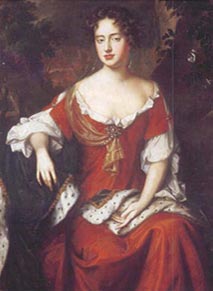Mehitable, James, Thomas, and Larkin in 1709
Maryland and London Town, 1709

In 1709, Great Britain and France were at war. In the colonies, the war was named Queen Anne's War, after Queen Anne, the reigning English monarch. The English, French, and their Indian allies fought in Florida, in New England, and in Canada.
Colonists in Maryland had tried to maintain peaceful relations with the Native Americans. Initially, the colonists received assistance and learned new skills from the local inhabitants, and lived and traded with them relatively amicably. However, relations deteriorated for a variety of reasons. European diseases like smallpox and diphtheria decimated native populations. As colonial settlements expanded, the newcomers’ ways of living, which relied on domesticated animals, conflicted with those of the native Indians. For instance, colonists let their cattle and hogs run free to trample the natives’ crops, which were essential to their food supply. Moreover, the natives became allies with different European nations, who competed with each other for control of the continent. War came at great cost to everyone, but especially to the native Indians. As a result, by 1709, most Native Americans had left Maryland. Some remained in the area, though, and visited London Town as traders, travelers, and day laborers.
While most colonies were owned and governed by the King or Queen, Maryland was privately held by the Calvert family. The Calverts allowed free, white landowners a voice in the local government. Founded on the principle of religious tolerance, Maryland permitted any Christian to worship freely. Many Catholics settled in the colony to avoid persecution at home in England. The colony was much less tolerant of non-Christian religions, such as African religions, native religions, Islam (practiced by some Africans), and Judaism.


